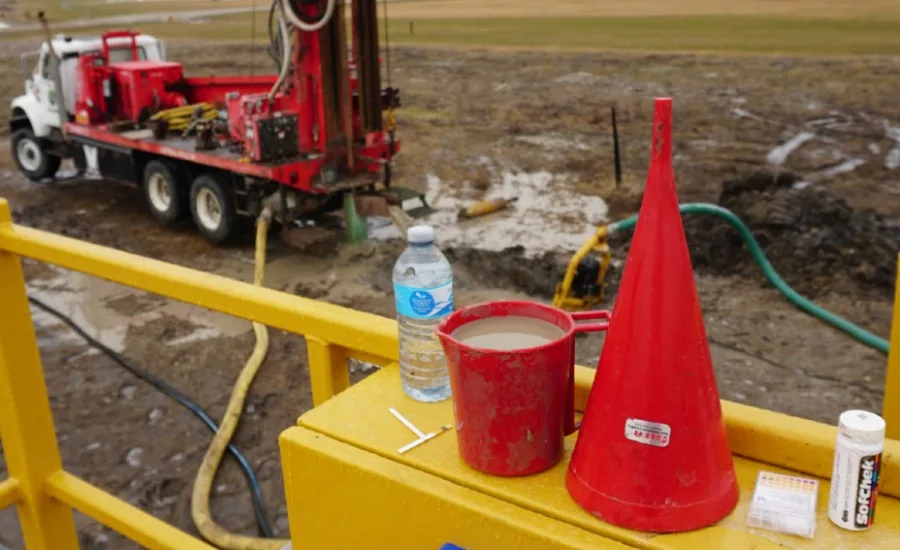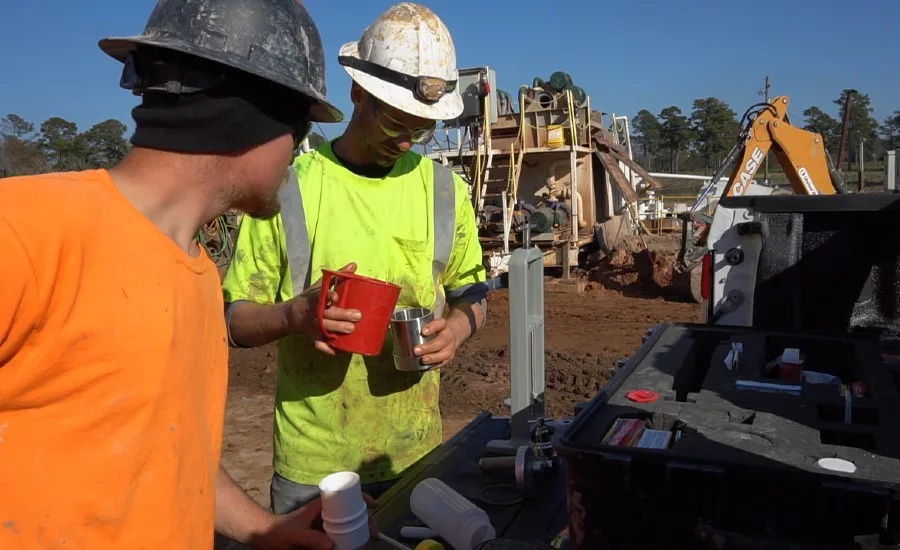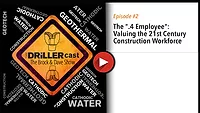What Does Testing Tell me about Drilling Fluids?
Questions, Answers about Good Drilling Mud Programs

Source: Brock Yordy

Testing is the first step in getting command of your drilling fluids.
Source: Brock Yordy
Mud rotary is one of the most utilized drilling methods around the world. A drilling company can choose to use the most basic ways to complete a job or coordinate with a mud engineer to create a drilling fluid program. A suitable fluids program requires proper testing and continuous addition of fluid products to maintain drilling fluid properties.
Last month, I found myself rehashing my old roots as a mud engineer. National Driller editor Jeremy Verdusco and I interviewed two different drilling fluid companies and their mud veterans in the video series “Drilling In-Site.” After the two videos aired, I got several questions about drilling fluid programs and mud testing from folks in the field and figured I’d answer them here too.
Q. What is your favorite piece of mud testing equipment?
A. If I had only one tool to utilize in the field, I would choose the mud balance or scales that measure fluid density. Understanding your mud weight and how a drilling fluid’s solids content affects your drilling project is invaluable. Increased fluid density can impact your ability to clean the borehole effectively, and the continued increase in solids will cause damage to the borehole. A drilling program that maintains a mud weight of 8.8 pounds per gallon or less will always maximize success.
The goals with testing drilling fluids are a better understanding of how specific formations affect fluid properties, and to ensure that your solids control method of choice can effectively remove the incorporated drilling solids.
Beyond just one tool, there are two widely accepted kits used to test mud: a basic kit and a deluxe testing kit. Both packages have the standard cup/funnel, sand content and mud balance. The deluxe kit includes a filter press and rheometer. The basic kit allows the drilling team to establish a baseline of drilling fluid properties to maintain for success. The deluxe kit creates a fuller picture of drilling fluid capabilities by incorporating water loss and cake properties from the filter press, along with the fluid dynamics characteristic of a rheometer.
The goals with testing drilling fluids are a better understanding of how specific formations affect fluid properties, and to ensure that your solids control method of choice can effectively remove the incorporated drilling solids. That is why I choose mud density over other tools at my disposal, especially when the drilling fluid program implements a mechanical solids control unit with cones and shakers.
Q. What is your go-to drilling fluid program for a formation that has a bit of everything?
A. A good drilling fluid program prepared to combat multiple formations is rooted in medium-yield bentonite and low-viscosity PAC polymer. I complete my drilling fluid package with a low-molecular-weight PHPA that creates a drilling fluid with a starting funnel viscosity of 38 to 42 seconds per quart. Mixed geologies drilling fluids will have low viscosity, a filtrate of less than 12 cc, and enough PHPA in the system to inhibit swelling in any clay encountered. The goal is to create a fluid that can stabilize and effectively clean the borehole. Build a fluid with the mindset that the incorporation of solids will increase viscosity, and that a high viscosity reduces pump efficiencies.
The best plan for drilling in an area where you do not know what you will encounter is to prepare for all situations. A good drilling program utilizes a premix tank that allows the drilling team the versatility to augment drilling fluid as required. Mixing new drilling products into an active system may be our industry standard, but it is not ideal and leads to complications the deeper a team drills. It is nearly impossible to add PHPA to a functioning system without the product crosslinking with solids and creating an unmanageable viscosity boost. The best practice is to add a new PHPA to a premix system.
Q. What is your best advice for a new mud driller?
A. The first time I ever mixed mud, I filled the mud pan with water, got the centrifugal pump circulating, and dumped the bag of high-yield bentonite at the back of the pan. I then stood there in confusion as the bentonite clumped up on the surface. Our industry has always been about trial by fire, and my first attempt at mud mixing was an absolute failure. After my buffoonery, I called the phone number on the bag and, later that week, met my first mud engineer. My first piece of advice: Call the experts and skip the failing.
Next, I suggest you go to a full-day or more extended mud school, and learn about drilling fluid properties and proper testing. Once you understand desired drilling fluid properties, get a basic mud kit and check your mud every time you see a change in its condition. Knowing how your fluid changes during the drilling process, and how you can rebuild that fluid, will increase your success rate tenfold.
The goal is to create a consistent baseline for your drilling fluid program, and then start to question why those properties change. A suitable drilling fluid program is a balance of maintaining desired properties and removing incorporated solids. Finally, proper drilling fluids are not the cause of borehole destabilization or water production deficiency. The drilling process, along with high-solids-content mud and ineffective hole cleaning, is the root cause of destabilization and production issues.
Drilling fluids and testing are just two components of the sophisticated drilling process. A competent drilling program starts by considering the cutting action of the bit and the size of drill solids created. Next, the program adds in the pumping system that will move the new solids away from the bit and up the hole. After we understand cutting and pumping, we can create a drilling fluid that will minimize the impact to the formation, aid in lifting cuttings to surface and stabilize the borehole. Once the cuttings reach the surface, our program has to have a plan in place to remove the solids. The final step of the program is maintaining the desired drilling fluid properties by mud testing and adding in new product to rebuild drilling fluid properties. A great driller and drilling program recognize that drilling is disruptive, and when we maximize all components we minimize the disruption.
Looking for a reprint of this article?
From high-res PDFs to custom plaques, order your copy today!




